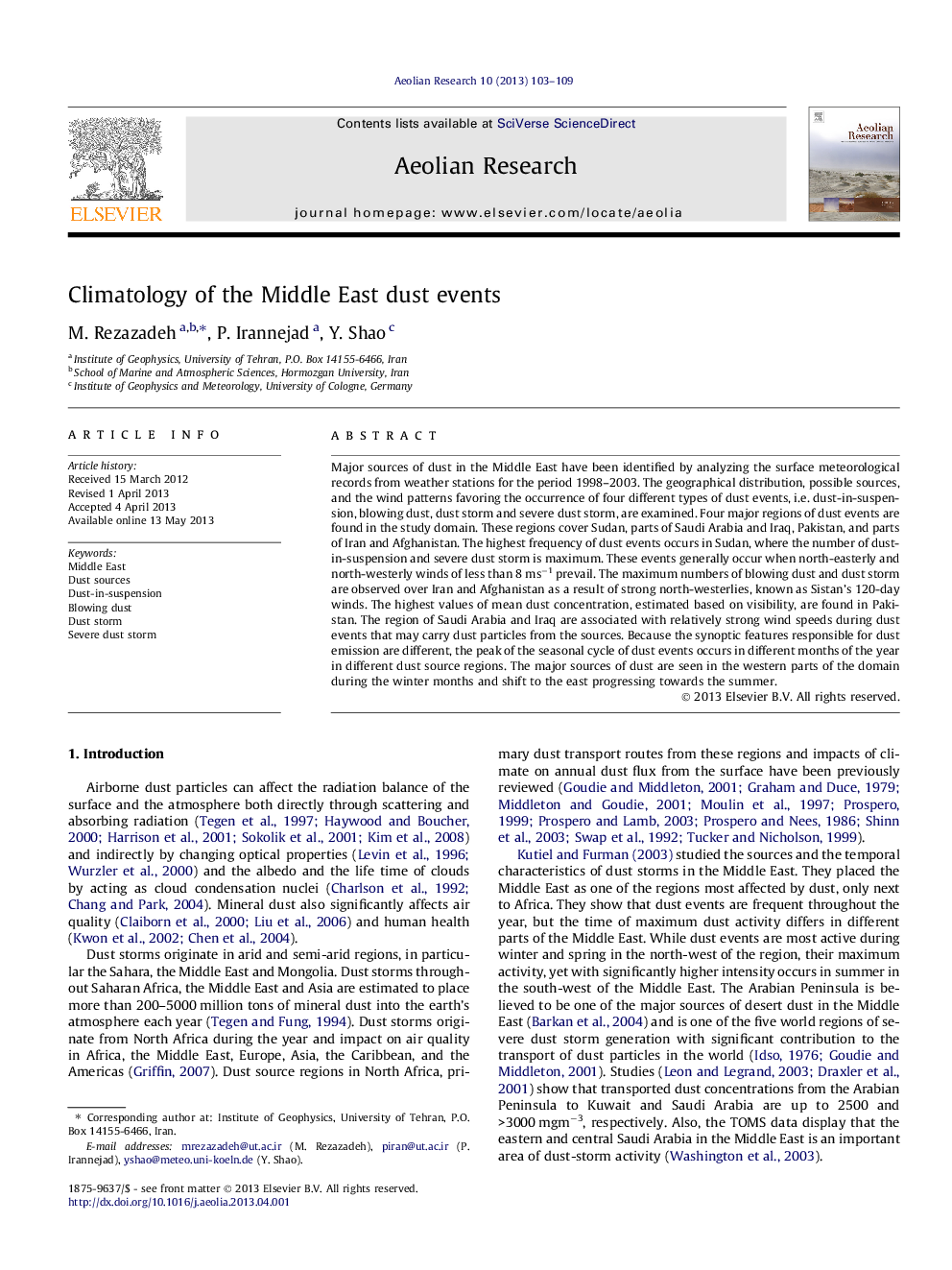| Article ID | Journal | Published Year | Pages | File Type |
|---|---|---|---|---|
| 4673822 | Aeolian Research | 2013 | 7 Pages |
•Major sources of dust in the Middle East have been identified by analyzing the surface meteorological records.•We found four regions base on the maximum number of types of dust events in the Middle East.•We used wind characteristics to study the synoptic conditions responsible for dust events in the Middle East.•The highest values of mean dust concentration, estimated based on visibility, are found in Pakistan.•Dust events are more frequent during the winter (the summer) in the west (the east) of the Middle East.
Major sources of dust in the Middle East have been identified by analyzing the surface meteorological records from weather stations for the period 1998–2003. The geographical distribution, possible sources, and the wind patterns favoring the occurrence of four different types of dust events, i.e. dust-in-suspension, blowing dust, dust storm and severe dust storm, are examined. Four major regions of dust events are found in the study domain. These regions cover Sudan, parts of Saudi Arabia and Iraq, Pakistan, and parts of Iran and Afghanistan. The highest frequency of dust events occurs in Sudan, where the number of dust-in-suspension and severe dust storm is maximum. These events generally occur when north-easterly and north-westerly winds of less than 8 ms−1 prevail. The maximum numbers of blowing dust and dust storm are observed over Iran and Afghanistan as a result of strong north-westerlies, known as Sistan’s 120-day winds. The highest values of mean dust concentration, estimated based on visibility, are found in Pakistan. The region of Saudi Arabia and Iraq are associated with relatively strong wind speeds during dust events that may carry dust particles from the sources. Because the synoptic features responsible for dust emission are different, the peak of the seasonal cycle of dust events occurs in different months of the year in different dust source regions. The major sources of dust are seen in the western parts of the domain during the winter months and shift to the east progressing towards the summer.
